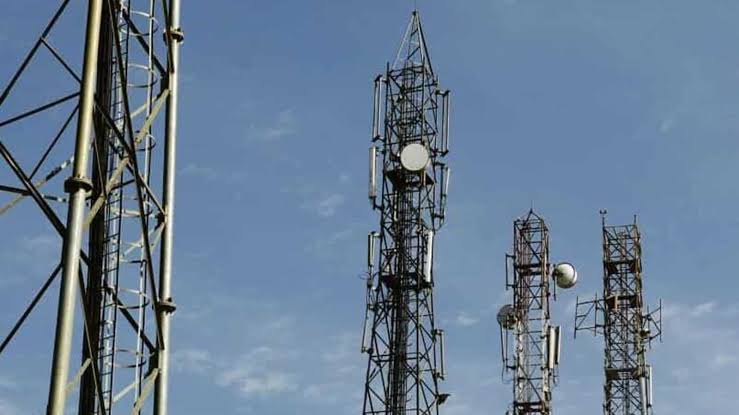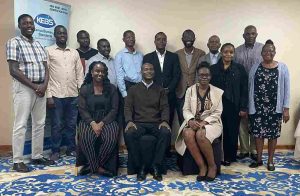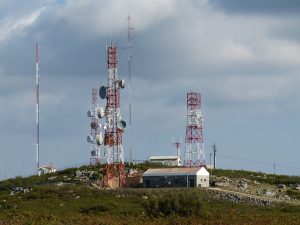KICTANet is a multi-stakeholder think tank for ICT policy formulation. One of its pillars is capacity building. Through its community Networks project, we strive to build capacity in telecommunications, a core component in the provision of digital access to unserved and underserved communities. This 4-part series in the telecommunications spectrum will explore:
- Introduction to Spectrum
- Telecoms Regulation
- Licensed, Unlicensed Spectrum and Lightly Licensed Spectrum
- Spectrum for Mobile Communications
- Challenges of Spectrum Access in Africa
What is Spectrum?
According to the Australian Communications and Media Authority, spectrum is a continuous range of electromagnetic radiation waves. It extends from the longest radio waves to the shortest X-rays and gamma rays. Radiofrequency spectrum which is a part of the electromagnetic spectrum (EM) sits in the lower part of the spectrum, and refers to a range of radio waves used for wireless communication purposes; FM or AM radio broadcasts, Bluetooth, Wi-Fi, etc ranging between 3 kHz to 300 GHz.
Spectrum frequency refers to the number of repetitions of the wave you see in a second and is measured in Hertz or multiples of it. Spectrum bandwidth is the difference between the lowest and highest frequency in the spectrum. It is therefore the width of the spectrum and is a measure of the information-carrying capacity of the signal. Spectrum band refers to portions of the electromagnetic spectrum grouped in “bands” depending on their wavelengths.
Spectrum is divided between different types of technology, with different technologies whether broadcasting or mobile communications requiring different frequencies of spectrum. AM and FM channels are all spread around 100MHz – 200MHz. The telecom spectrum starts from 800MHz and goes up to 2300MHz. Beyond is unlicensed bands used for technology such as Wi-Fi and Bluetooth.
Spectrum Allocation
Spectrum is a sovereign asset. Use of the airwaves in each country is overseen by the government or the designated national regulatory authority, which manages it and issues the needed licenses.
According to a GSMA handbook, the International Telecommunication Union (ITU) through the Radiocommunication Sector (ITU-R). ITU-R is responsible for the coordination and implementation of the Radio Regulations, which are revised by World Radiocommunication Conferences (WRCs), normally held every four years. ITU-R is the pre-eminent agency that sets and coordinates international standards for radiocommunication systems, interconnection of networks, data transport, online security, broadcasting systems, and multimedia systems, such as streaming audio and video.
In Kenya, the Communications Authority of Kenya (CA) is the body mandated with the management of the country’s radio frequency spectrum and numbering resources. CA falls under the Ministry of Information, Communication, and Technology and was established under the Kenya Information and Communications Act, 1998 (KICA).
CA carries out national coordination to ensure the harmonious sharing of frequencies by various users and services. It also performs international and regional frequency coordination to avoid harmful interference of frequency users in different administrations.
The services that require frequency licenses from CA include; TV and FM radio broadcasting, cellular mobile telecommunications, postal and courier services, satellite communications, aeronautical and maritime radio services as well as emergency and disaster communication services.
Spectrum Management
Spectrum management also known as spectrum allocation is the process of regulating the use of radio frequencies to promote efficient use and gain a net social benefit. Spectrum management starts at an international level when governments come together to agree on which frequency bands should be allocated to certain services. This is done every 4 years by the ITU-R through the World Radiocommunication Conferences (WRC).
This minimizes national and international interference, an approach known as “harmonization”. Harmonization makes it easier to build devices that can be used across international borders, helping reduce the prices of equipment and enabling consumers to roam onto foreign networks.
ITU divides the world into three regions for radio spectrum management. Each region has its own set of frequency allocations;
Region 1: Europe, the Middle East, Africa, Russia, and Mongolia;
Region 2: The Americas including Greenland and some of the Eastern Pacific Islands; and
Region 3: Asia-Pacific including most of Oceania.
Regional groups formed from the three regions provide a forum for national regulators to coordinate their spectrum policies and push for changes at every World Radiocommunication Conference (WRC).
This is a series of blogs about Spectrum in a series of our publications on Community Networks.
__________________________________________________________
Ms Catherine Kyalo is the KICTANet Africa Regional Coordinator for Community Networks under the APC-LOCNET initiative. She is passionate about community welfare and enjoys yoga to rejuvenate. LinkedIn | Twitter
![]()





Please keep more articles coming on spectrum. Good work 👏👏